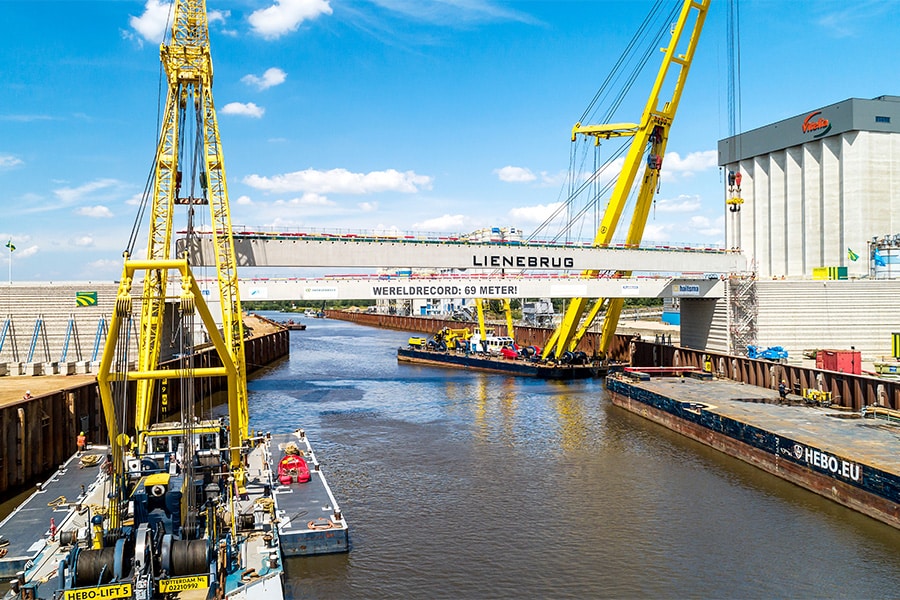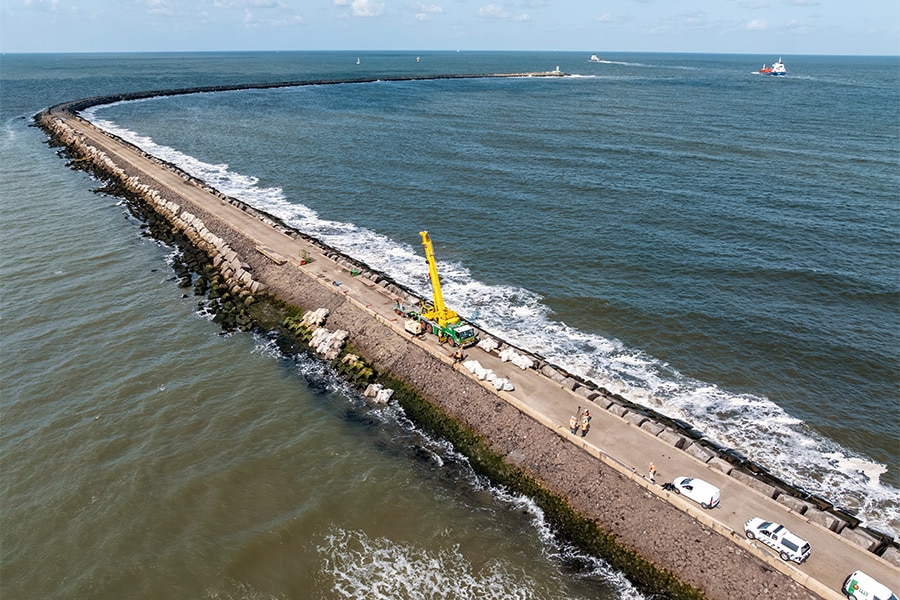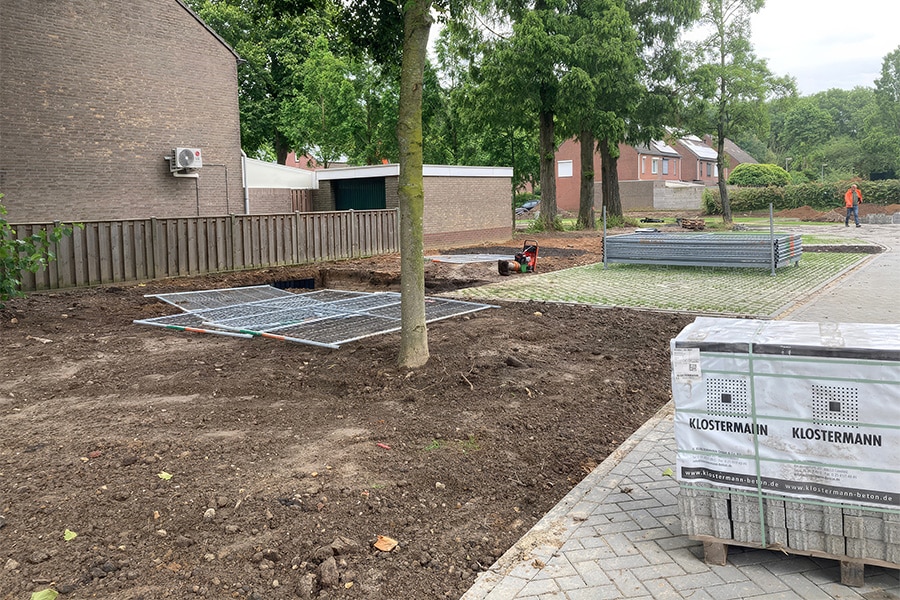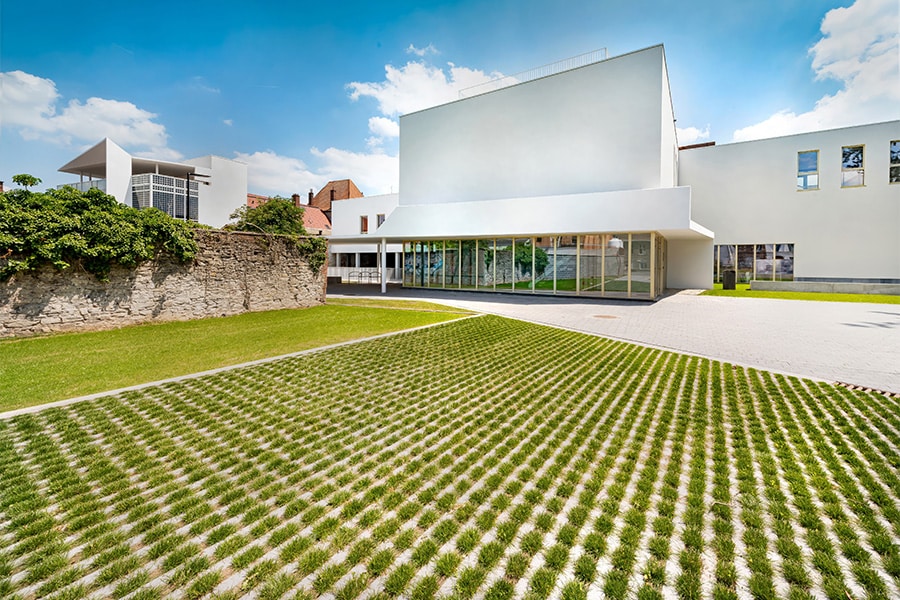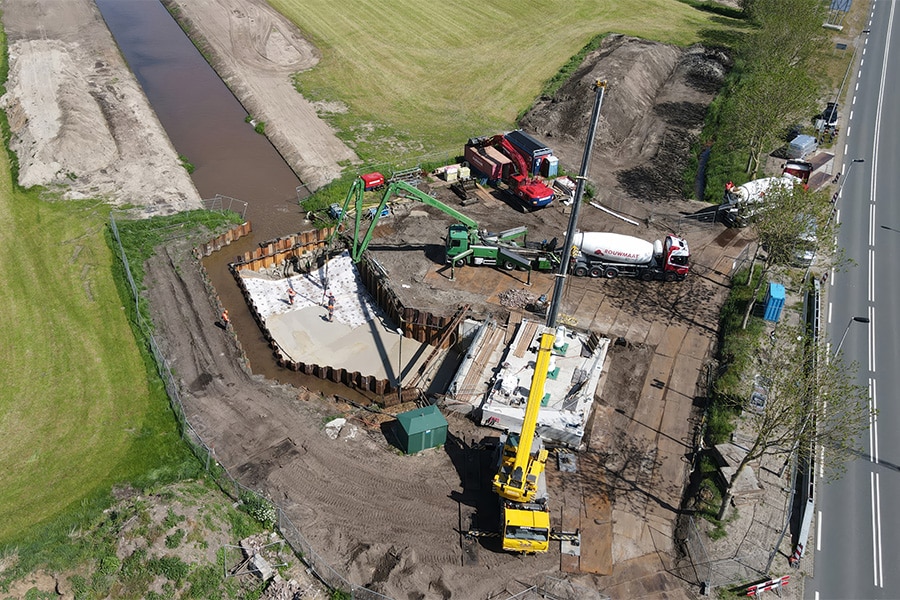
Geopolymer concrete: innovation for sustainable infrastructure
Betonhuis and GWW-Bouwmat will publish six knowledge articles on concrete in relation to sustainable infrastructure in 2025. This Q&A section focuses on innovation and concrete engineering. This second article discusses geopolymer concrete.
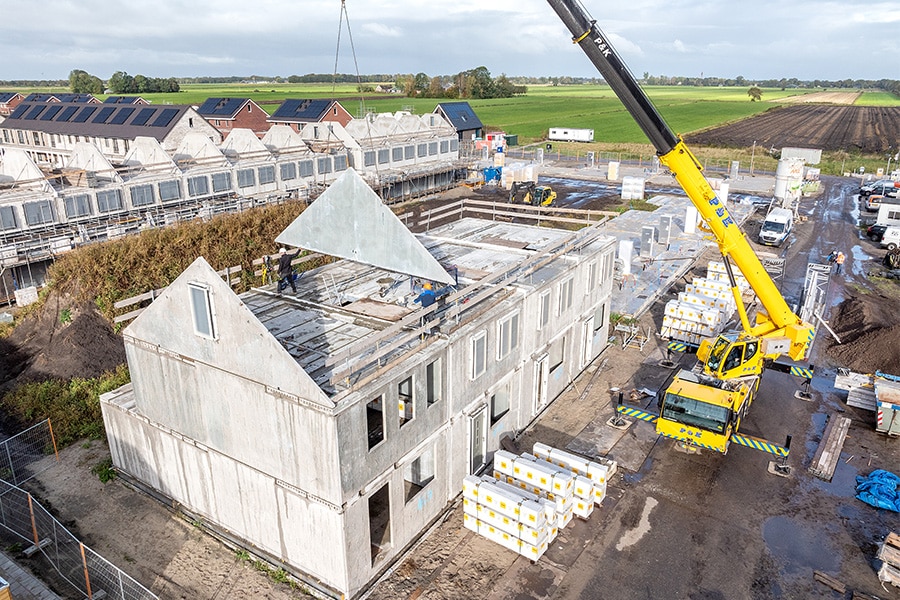
1. What exactly is geopolymer concrete?
Geopolymer concrete (GPB) is a sustainable alternative to traditional cement concrete. Instead of using cement as a binder - which produces a lot of CO2 emissions - GPB uses a mixture of silica- and alumina-rich raw materials, such as metakaolin or blast furnace slag, activated with an alkaline agent such as caustic soda or water glass. This creates a stony bond that is similar in performance to ordinary concrete, but with a much lower environmental impact.
2. Is geopolymer concrete a new invention?
No, it is certainly not a new material. It was already used in Roman times, and it was also successfully built with this technology in the former Soviet Union. Yet only in recent years has GPB gained renewed interest - mainly because of the urgency to reduce CO2 emissions in construction.
3. How does GPB differ from "normal" concrete?
The main difference is in the binder. Whereas traditional concrete uses cement and water, GPB uses a combination of industrial residues (such as fly ash or slag) and alkaline activators. As a result, GPB not only has lower CO2 emissions, but also other technical properties, such as higher chemical resistance and lower water penetration.

4. What advantages does GPB offer over cement concrete?
The benefits are both sustainable and technical:
- Lower CO2 profile by avoiding cement.
- Less shrinkage and cracking.
- Improved resistance to acids, chlorides and freeze-thaw salts.
- Low water penetration and higher abrasion resistance.
- Longer service life, especially in aggressive environments such as ports.
5. Are there any drawbacks or challenges?
Yes. A major challenge is the variation in available feedstocks. Because GPB often uses local residues, such as slag and fly ash, the chemical compositions can vary widely. This makes standardization difficult. Also, there is not yet a European product standard for GPB, which hinders acceptance in structural applications. In addition, the curing process sometimes requires appropriate post-treatment.
6. What applications are already possible with GPB?
GPB is already successfully deployed today in:
- Precast elements such as tiles, pavers, steps and panels.
- Hydraulic structures such as quay walls, pumping stations and tanks.
- Infrastructure, particularly where chemical resistance is required.
- Load-bearing (poured) applications, subject to additional requirements
- is met.
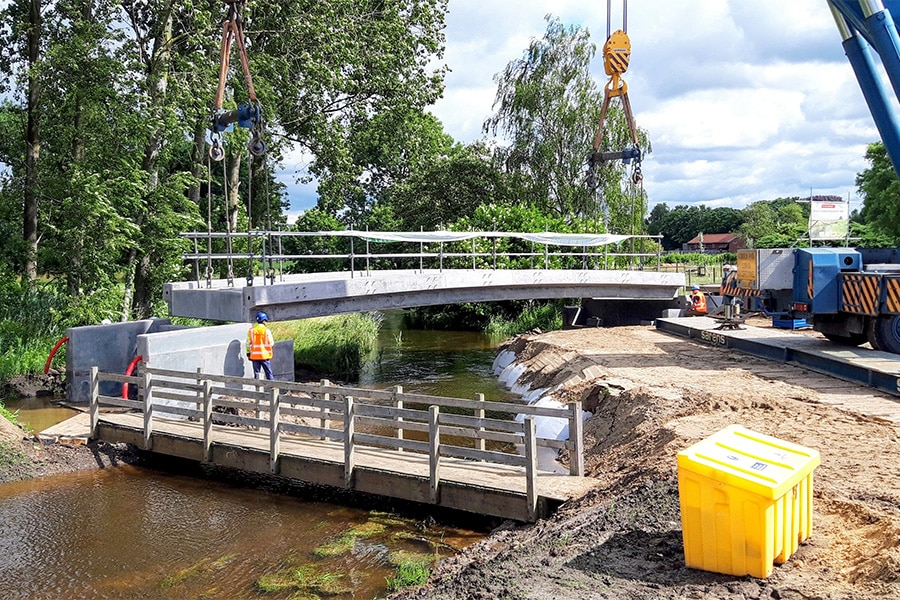
7. Is GPB already legally recognized in the Netherlands?
Positive steps have been taken. Kiwa has published a national assessment guideline (BRL 5077) that links GPB to the Soil Quality Decree. This enables application on environmental grounds. There are also working groups of CROW, Betonhuis and others working on further integration into the standards framework. A supplement to EN 206 already exists in the United Kingdom. European breakthroughs are expected to follow within a few years.
8. How is GPB contributing to the Concrete House CO2 Roadmap?
Concrete House aims to achieve a 25 to 30 percent CO2 reduction by 2030. One strategy is to replace clinker-based cements with alternatives, such as geopolymer binders. Within this approach, GPB is being actively explored as a promising option, alongside other techniques such as grain packing optimization and binder replacement.
9. What are the mechanical properties of GPB?
GPB generally has properties that fall within the range of traditional concrete:
- Compressive strength may be similar or higher.
- Tensile strength is often better, which is positive for cracking.
- Elastic modulus is slightly lower than for traditional concrete.
- Shrinkage and creep are highly dependent on the mixture, but not necessarily worse than for cement concrete.
10. What about fire resistance and chemical resistance?
GPB also scores positively here. The lower amount of calcium in the mix provides better resistance to chemical attack. Fire resistance is also often better than that of traditional concrete. The dense microstructure of GPB limits the passage of harmful substances, such as chlorides, which is beneficial for reinforcement protection.
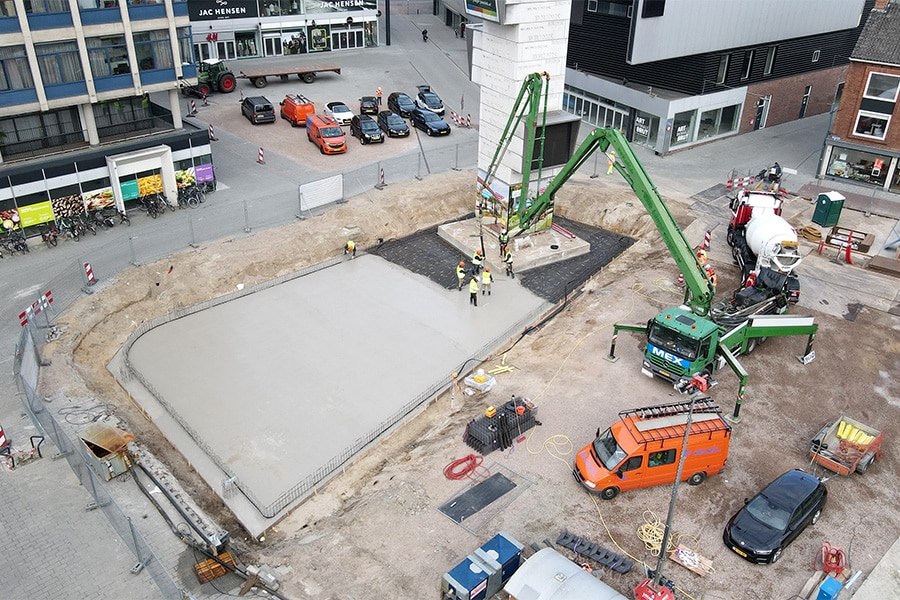
11. How does GPB relate to the new PCR Cement and EQI calculations?
The 2023 updated Dutch Product Category Rules (NL-PCR) have tightened the calculation rules for cement products. The impact on MKI scores of concrete products is limited, but positive. Geopolymer concrete especially benefits when produced with locally available residual materials and limited transport movements. Thus, GPB contributes to lower environmental costs and better scores in sustainability comparisons.
12. How important is resource availability?
Important. GPB relies heavily on industrial waste streams, such as blast furnace slag, fly ash or calcined clay. The availability and composition of these materials vary by region, making standardization difficult. At the same time, this dependence also makes it possible to produce locally with minimal transportation costs, which in turn is positive for the environment.
13. Is GPB the solution for all concrete structures?
Not necessarily. GPB is promising, but not suited for every application and the market volume is limited. Some mixtures are sensitive to carbonation or have specific curing requirements. In other cases, the environmental benefits or technical advantages are so great that GPB is an excellent alternative. So it remains a question of "the right concrete in the right place.
In conclusion
Geopolymer concrete symbolizes the transition to a more sustainable construction industry. Although the technology is not new, its practical application in the Netherlands requires a smart combination of innovation, regulation, cooperation and market acceptance. Betonhuis and its partners are actively working to accelerate this movement, including through working groups, practical research
and knowledge sharing.
Want to know more?
Visit the Betonhuis website and find out all about the Roadmap CO2, ongoing projects and practical examples of GPB. This Q&A is based on the whitepaper Geopolymer Concrete, an initiative of Betonhuis and several partners. The whitepaper will be published in mid-May 2025.
